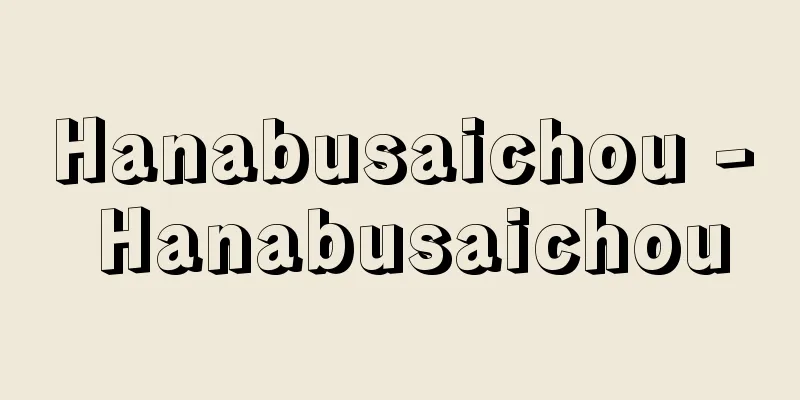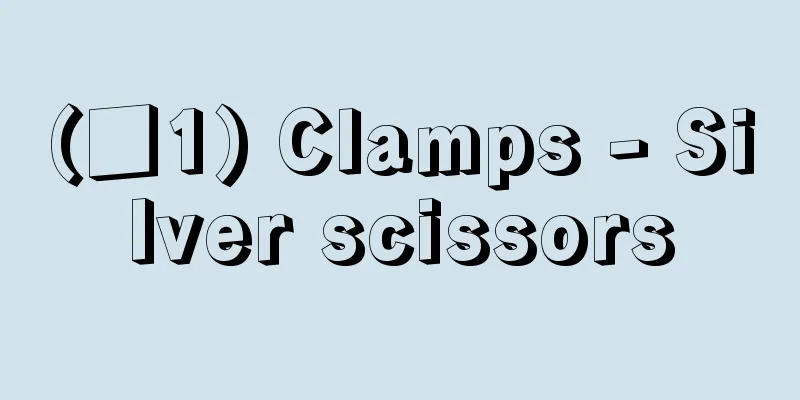Hanabusaichou - Hanabusaichou

|
A painter of the early Edo period. The founder of the English school. Born in Kyoto as the son of the doctor Taga Hakuan. His childhood name was Isaburo, his given name was Nobuka, his pen name was Kunju, and after shaving his head he called himself Choko. He also had the pen names Suisao, Rinshoan, and Kitamado, and his haiku names were Gyouun and Sekiryo. Around 1659 (Manji 2), he went down to Edo and studied painting under Kano Yasunobu, but he was dissatisfied with the Kano school at the time, which was losing its creativity by repeatedly producing powder copies, and he opened up a new frontier in the world of emerging urban genre paintings opened up by Iwasa Matabei and Hishikawa Moronobu. He became successful as a unique genre painter, characterized by witty interpretations of themes and compositions, and stylish depictions. At the same time, he studied under Basho and was also fond of haiku poetry. In 1698 (Genroku 11), he incurred the wrath of the shogunate and was exiled to Miyake Island, but in 1709 (Hōei 6) he was amnestied by the new shogun and returned to Edo, where he changed his artistic name from Taga Choko to Eiichicho. In his later years, he gradually moved away from genre paintings and also painted flower-and-bird paintings and landscapes in the style of the Kano school, but he never lost the light, witty and intelligent style he had cultivated through haiku poetry throughout his life. Representative works include "Shiki Himachi Zukan" (Idemitsu Museum of Art, Tokyo), a work created during his exile on Miyakejima Island and highly valued as the "Shima Ichicho", "Yoshiwara Fuzoku Zukan" (Suntory Museum of Art, Tokyo), and "Nunozarashi Izu" (Toyama Memorial Museum, Saitama). [Satoru Sakakibara] "Complete Collection of Japanese Art Paintings 16: Morikage/Itcho" by Tadashi Kobayashi (1982, Shueisha) [References] | |Source: Shogakukan Encyclopedia Nipponica About Encyclopedia Nipponica Information | Legend |
|
江戸前期の画家。英派の祖。医師多賀伯庵(はくあん)の子として京都に生まれる。幼名猪三郎、諱(いみな)は信香(のぶか)、字(あざな)は君受(くんじゅ)、剃髪(ていはつ)して朝湖(ちょうこ)と称した。翠蓑翁(すいさおう)、隣樵庵(りんしょうあん)、北窓翁などと号し、俳号に暁雲(ぎょううん)、夕寥(せきりょう)があった。1659年(万治2)ごろ江戸へ下り、絵を狩野安信(かのうやすのぶ)に学んだが、いたずらに粉本制作を繰り返し創造性を失った当時の狩野派に飽き足らず、岩佐又兵衛(いわさまたべえ)や菱川師宣(ひしかわもろのぶ)によって開かれた新興の都市風俗画の世界に新生面を切り開いた。機知的な主題解釈と構図、洒脱(しゃだつ)な描写を特色とする異色の風俗画家として成功。かたわら芭蕉(ばしょう)に師事して俳諧(はいかい)もよくした。1698年(元禄11)幕府の怒りに触れ三宅(みやけ)島に流されたが、1709年(宝永6)将軍代替りの大赦により江戸へ帰り、画名を多賀朝湖から英一蝶と改名した。晩年はしだいに風俗画を離れ、狩野派風の花鳥画や山水画も描いたが、終生俳諧に培われた軽妙洒脱な機知性を失うことはなかった。代表作に、いわゆる「島(しま)一蝶」として珍重される三宅島配流時代の作品『四季日待図巻』(東京・出光(いでみつ)美術館)や『吉原風俗図巻』(東京・サントリー美術館)、『布晒舞図(ぬのざらしまいず)』(埼玉・遠山記念館)などがある。 [榊原 悟] 『小林忠著『日本美術絵画全集16 守景/一蝶』(1982・集英社)』 [参照項目] | |出典 小学館 日本大百科全書(ニッポニカ)日本大百科全書(ニッポニカ)について 情報 | 凡例 |
<<: English Grass Paper - Hanabusa Soushi
Recommend
Alumina cement
Also called fused cement. A hydraulic cement whos...
Aschaffenburg, G.
…Theories of crime etiology can be divided into t...
Apollo (mythology) (English spelling) Apollo
…One of the twelve Olympian gods in Greek mytholo...
Strepera graculina (English spelling) Strepera graculina
… [Hiroyuki Morioka]. … *Some of the terminology ...
Iketei-ki
Also called "Chitei no Ki." This is a C...
Sendai Domain
The Tozama clan had its headquarters in Sendai, M...
Pale red millipede - Pale red millipede
…They do not curl up when startled like other mil...
Hotaria parvula (English spelling) Hotaria parvula
...The antennae are thick. The Hime firefly Hotar...
Bereaved families association - Izokukai
An organization whose main objectives are to comme...
Ichiou - Ichio
…He was Ise no Kami, and later Etchu no Kami. His...
Light aircraft - keihikōki (English spelling)
There is no strict definition, but it refers to a...
Oshu Fujiwara Clan
A powerful clan in the Tohoku region from the mid ...
Arabia Felix
...These kingdoms are collectively called the anc...
Firefighter - Hikeshi
Firefighting organizations established in each ci...
Awasebuki - Awasebuki
...A certain melody pattern is played in successi...









![Shichinohe [town] - Shichinohe](/upload/images/67cbc3a886e30.webp)